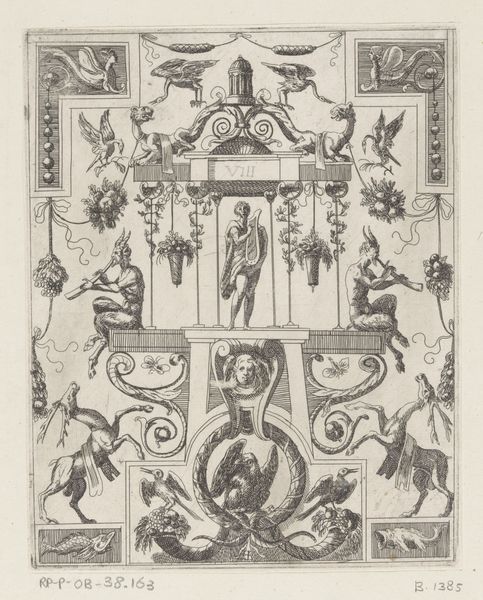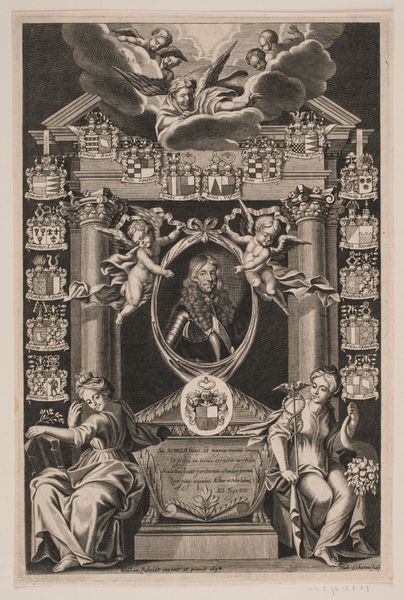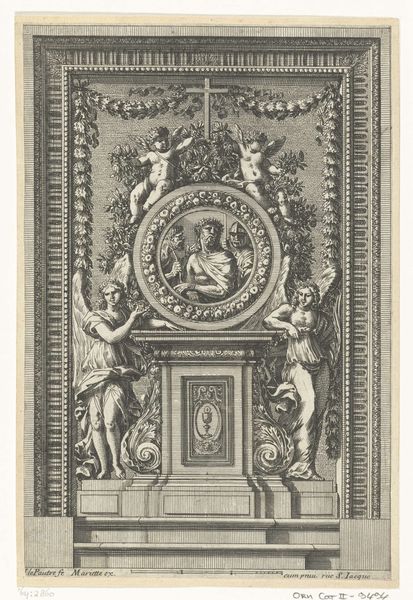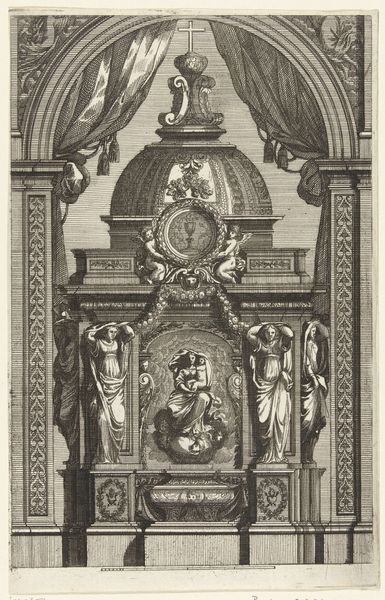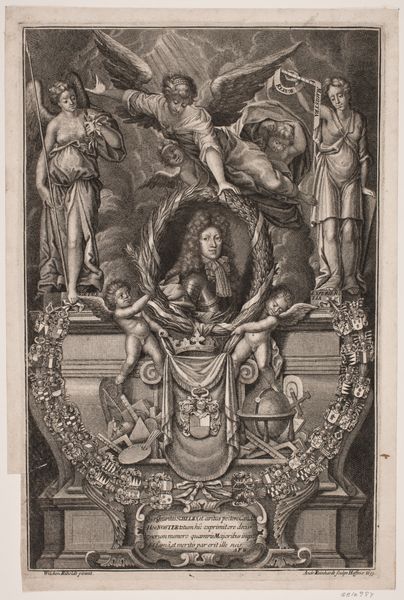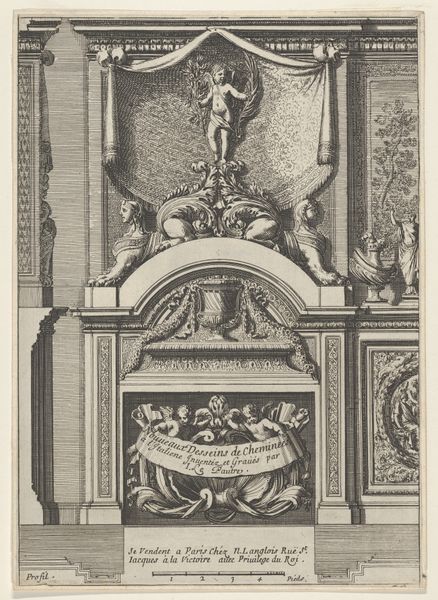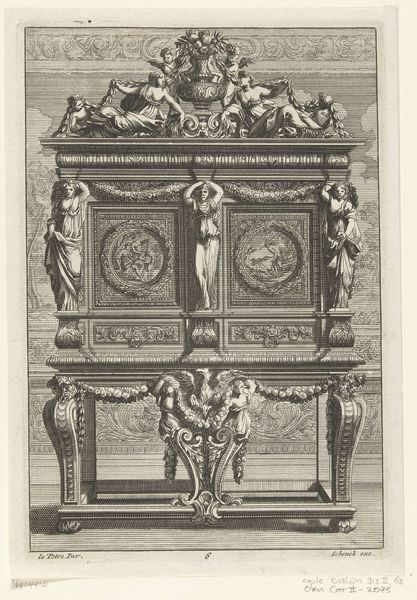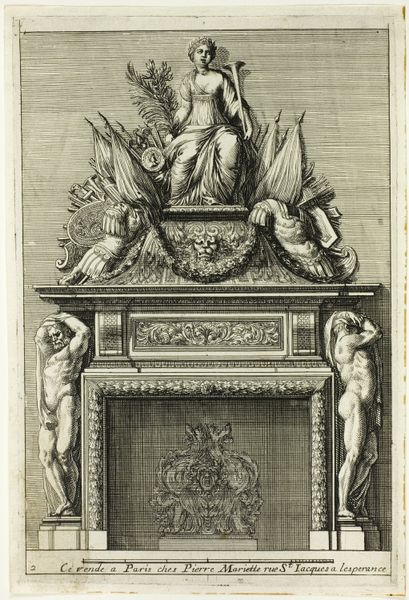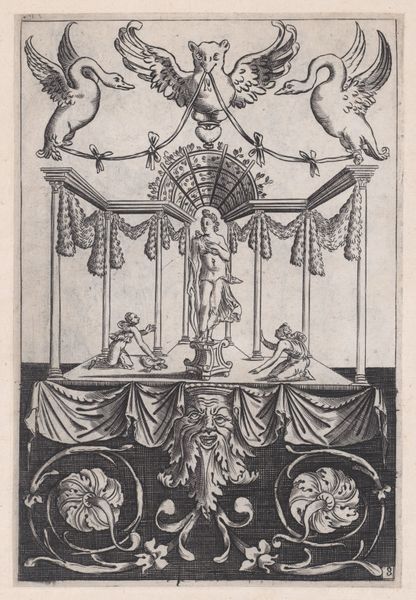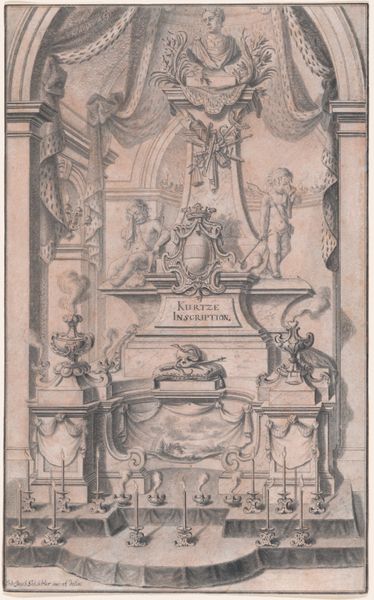
drawing, print, engraving, architecture
#
drawing
#
baroque
#
pen drawing
# print
#
form
#
11_renaissance
#
geometric
#
line
#
history-painting
#
engraving
#
architecture
Dimensions: height 230 mm, width 155 mm
Copyright: Rijks Museum: Open Domain
Curator: Immediately, I notice the sheer level of ornamentation, it's astounding. Editor: Absolutely, and look at how finely the lines are engraved. This is a print entitled "Titelblad: Tabernacles d'Autels a l'Italiene" by Jean Lepautre, dating back to 1661. It's currently housed in the Rijksmuseum. Curator: Yes, the lines forming the drapes, the floral arrangements, everything builds a sense of almost overwhelming reverence. But it feels carefully constructed, deliberately layered. Editor: Right, considering this is an engraving, think about the labor involved in producing these intricate designs. Each line painstakingly carved into a metal plate, inverted, then printed to disseminate ideas about altar design across Europe. Curator: Indeed, the symbol of the radiant host takes center stage, framed by these figures offering floral wreaths. Floral wreaths signify victory and honour – a classic emblem here repurposed to represent religious fealty. It is common visual language, recontextualised and deeply meaningful. Editor: It speaks to a period of Counter-Reformation, the Church attempting to retain symbolic power through material culture. The altars themselves were instruments as much as places for prayer. It served a propagandistic function through grandeur. Curator: Consider also the geometry inherent here – circles within squares, echoing classical ideals, supporting and enhancing spiritual ideas through balanced forms. Note the constant, intentional layering that builds towards the holy image. Editor: You’re spot-on, but it’s vital to think about access too. Prints democratized design in ways previously impossible. Suddenly smaller churches and poorer areas could emulate, albeit through print, the altars of grand cathedrals. The dissemination of Baroque ideals through easily consumed methods. Curator: And that democratization would surely change those ideals over time, creating hybrid symbolism across the world, influenced by available materials and other pre-existing local beliefs. Editor: A thought-provoking idea, considering how labor and resources influenced what the engraver produced in the first place. I had not considered its reciprocal action. Curator: It’s amazing how something seemingly static can embody layers of culture, process, and potential future influences.
Comments
No comments
Be the first to comment and join the conversation on the ultimate creative platform.
